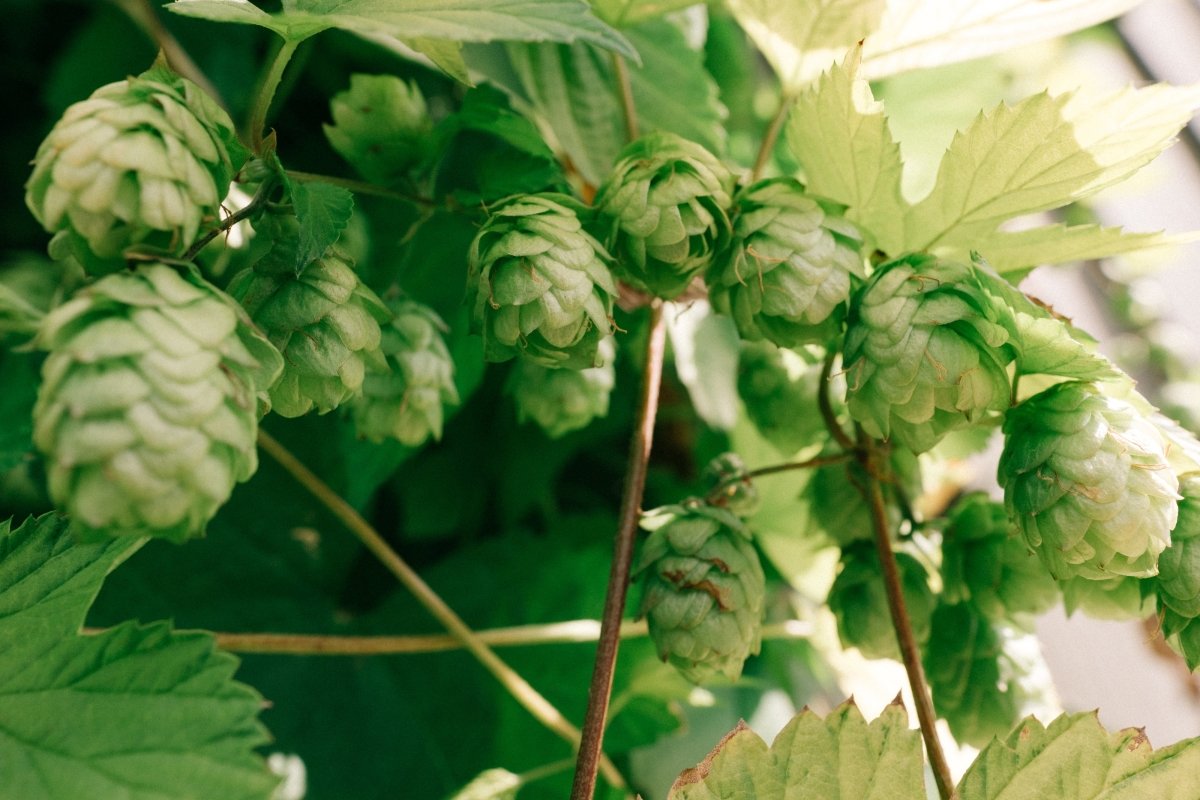Your cart is empty

SiWC Tour of Hops: Stop 1
For the past several decades or more, when beer is mentioned, hops are the first thing that comes to people’s minds. These bine-based flowers have been used in beer for at least a millennia if not longer. But it’s only in recent times that they have come to the forefront of beer.
Hops have become so integral to craft beer that it seems a vast majority of modern beer drinkers are ‘hopheads’. These hop super-fans will go at any length and vault every obstacle to satiate their lupulin fix. A no-holds-barred approach to costs, preorders, queues, ticketed events and arbitrage means these drinkers can continually partake in perpetually increasing levels of hoppy goodness.
What is it about these almost revered plants that have elevated craft beer and accelerated its growth?
A Brief History of Hops
We first touched upon hops in our post entitled ‘How to Brew Low ABV Beer’. That leaves us with a lot to cover about everything hops and we will slowly chip away at each stop on the Tour of Hops. We will start with a ridiculously concise history.
Just exactly how long hops have been used in beer is unknown. The first historically documented use of hops in beer comes from a reference to the hop garden of Charlemagne’s father in the 9th century.
It isn’t until near the end of the 12th century that an abbess, Hildegard of Bengen, more clearly recorded the use of hops in brewing as a preservative. It would then take hundreds of years for hops to supplant gruit as a primary ingredient in beer. (Gruit was a mix of foraged ingredients like dandelion, burdock root, marigold, ground ivy, and heather).

Image source: Wikipedia
The history of beer is rich, with many changes happening concomitantly. A good idea is a good idea; different cultures would arrive at the same conclusions. Despite being labelled a “wicked and pernicious weed” British beers began to get hopped in the 15th century due to the influence of Dutch imports.
In 1516 the Bavarian beer law, referred to as the Reinheitsgebot, would legally define what ingredients could be in beer: barley, water, and hops! Additionally, hopped beers in Germany were not taxed by the Catholic church, unlike gruit flavoured beers. This led to a quick rise in the popularity of hoppy beer among German protestants.
Our Favourite Hops Today
Our favourite hops change with seasons much like our favourite beers. Here are some of our preferred hops right now.
Amarillo
Amarillo is unique in this list because it is not a product of expensive and labour intensive breeding programs. In fact, the Amarillo hop almost didn’t make it into your beer glass. It was discovered on Gamache Farms Inc. as an unremoved rogue plant in a crop of Liberty hops.
Normally, this plant would have been destroyed, but there was something different about hop plant VGXP01. Fourth-generation farmer Darren Gamache, who was a teen at the time, recalls, “My father smelled it and said that’s what a beer should taste like,” Gamache said.
Amarillo is the brand name for this popular and patented hop that hails from Washington in the pacific northwest of the US.
VGXP01 is packed with alpha acids (the primary driver of beer bitterness) at around 9-11%. As far as oil content goes, it is also high in myrcene and cohumulone. These hop oils create similar profiles to Cascade and Centennial, but with much bigger citrus aromas.
Think grapefruit with big notes of orange and lemon and moderate dankness.
Citra

In the world of craft beer, there probably isn’t a more popular hop today than the officially named HBC 394. But in case you’re new to the game (or just emerged from your post-apocalyptic bunker), it‘s time to get acquainted with this king of hops. HBC 394, also known as the Citra brand, is a direct result of the first private hop breeding program in America started by John I. Haas in 1978.
Breeder Gene Probasco made the cross that resulted in Citra. After being tested by the big brewers it was shelved, but Probasco kept it going on a ‘museum hill’. It would eventually be resurrected as part of a joint venture called the Hop Breeding Company (HBC). The project was funded by three craft brewing giants: Sierra Nevada, Deschutes, and Widmer Brothers.
Citra is world-famous for its big tropical fruit and citrus character. This dual-purpose hop is known for its high alpha (10-15%), and oil content as well as its low cohumulone. When you think of Citra, think of grapefruit, melon, passion fruit, peach, lime, lychee and other tropical fruits.
These bold flavour and aroma characteristics make Citra one of the most popular hops in the world.
Mosaic
Our next hop is called HBC 369 but known by the brand Mosaic. This hop was a result of a privately funded breeding and selection process and has somewhat royal parentage. Mosaic is a direct result of a cross between the ground-breaking hop of YCH 14 (Simcoe) and a male Nugget plant.
Mosaic is another dual-purpose hop and the name couldn’t be any more fitting. The Mosaic hop brings in a wide range of flavours/ aromas with many layers of complexity. It packs a punch in bitterness with an alpha acid range of 11.5%-13.5% while delivering huge amounts of hop oils like myrcene, caryophyllene and linalool.
Expect dank characters like fresh-cut grass and pinewood with tropical notes like citrus, mango, tangerine, and papaya. Aromas like blueberry, earthy, floral and spice all contribute to a rollercoaster ride for the drinker.
Idaho 7
Hops are known to grow well in many of the same places as potatoes (where are all the Irish hops?). It was only a matter of time before Idaho, unofficially deemed ‘The Potato State’, would start putting something magical out into the lupulin universe. Idaho 7 is the first new hope released by the Jackson Hop Farm just outside of Boise in Wilder, ID.
We know what you’re thinking: what’s with the number? Well, the answer is simple. In 2015, Nate Jackson was experimenting with 9 different new hop varieties; one stood out from the rest, number seven.
Idaho 7 is primarily used as an aroma hop because it is packed with oils that give beers pungent and tropical juiciness. This hop also adds in lighter notes of citrus, passionfruit and black tea–almost earl grey-like in character.
Idaho 7 has a big alpha acid content (9.5-14.9%) so can be used for bittering if you desire. This relative newcomer to craft beer is great for juicy IPAs as it's not nearly as difficult to procure as other rock stars of the hop world.
Ride the Shetland Pony
If you’ve made this far, you are now wondering what’s up with the random discussion of four specific hops. Those who frequently partake in Sheep in Wolf’s Clothing beers have already figured it out. Amarillo, Citra, Mosaic, and Idaho 7 are the 4 hops in our 2.8% gold medal winning pale ale, Shetland Pony.

You might want to get on your best Tommy Bahama shirt or Hilo Hattie Aloha dress before cracking into this one. As with everything as SiWC, looks can be deceiving. This little pale ale is packed with tropical goodness at the forefront. A malt backbone of oats, wheat and barley bathe your mouth in velvety pillows.
Look for tasting notes of citrus, passionfruit, mango, and lychee followed by blueberries, pine, and grapefruit. And the best thing is, at 2.8%, you can drink one and go about the rest of your day (or drink another one!).
Enjoy Responsibly. Drink Fresh.
At SiWC, we appreciate all styles of beer. What we like to drink depends on our mood and current setting. We find a good non-alcoholic or full-strength lager hits the spot in many situations; however, we cannot ignore the tasty appeal of a refreshing modern pale ale.
There is huge potential from the hop breeding programs in both the old and new world of beer. The world of hops demands its own dedicated blogs; we know this article is brief but we shall return to our Hop Tour soon. So watch this space!
- Choosing a selection results in a full page refresh.


